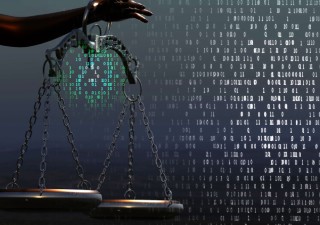Amen! Do copyright laws affect religious texts?
30 November 2024
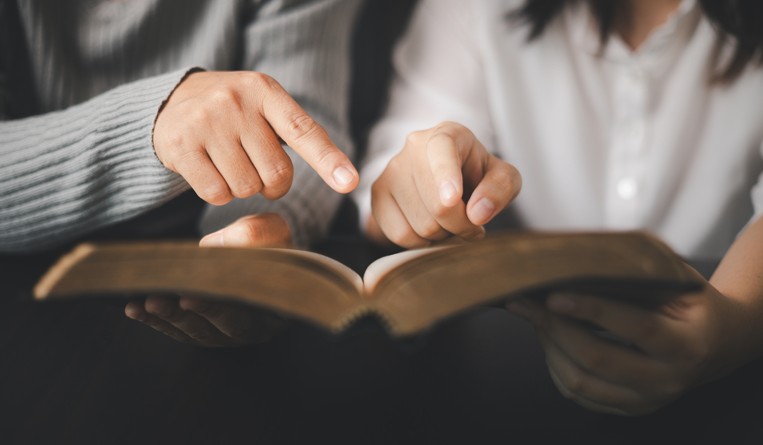
The relationship between copyright law and religious texts varies across global jurisdictions. Excel V. Dyquiangco explores how copyright laws impact the reproduction and distribution of these texts, including licensing requirements, special provisions and varying approaches.
Religious texts hold a unique place in society, revered not just as spiritual guides but also as cultural artefacts that embody the collective wisdom of communities. However, the reproduction and distribution of these texts have increasingly come under the scrutiny of copyright laws, raising complex questions for religious organizations worldwide.
As a classic example, the United States Conference of Catholic Bishops (USCCB) drew attention earlier this year with a memo reminding bishops that parishes must pay the USCCB licensing fees to reprint scripture in bulletins or worship aids. It is important to note that the USCCB holds the copyright to the authorized English-language translation used in liturgies in the United States and requires individuals, parishes or publishing companies to pay a licensing fee to reprint portions of scripture readings.
In some jurisdictions, such as Singapore and Malaysia, their copyright laws share many similarities, both being common law countries that once applied the UK Imperial Copyright Act (CA) 1911. However, Yvonne Tang, a director of intellectual property at Drew & Napier in Singapore, pointed out that while the Malaysian Copyright Act 1987 contains many provisions substantively similar to those under the Singapore copyright act, there is no provision under the Malaysian copyright law that is equivalent to Section 296 of the Singapore act dealing with the religious performance of literary, dramatic or musical works, or that explicitly references religious work.
“This may appear surprising, at first blush,” said Tang. “However, it has been hypothesized that the exception for religious performance in Singapore (under Section 296 of the Copyright Act) was initially meant to permit the use of religious songs during religious worship. Accordingly, because Islam, the dominant religion in Malaysia, generally prohibits music and singing during worship, such a provision would be less relevant in Malaysia and is therefore not present. This hypothesis was further supported by the observation that countries like India and Thailand have similar provisions in their respective copyright laws, corresponding to the fact that the dominant religions in these countries incorporate music and songs as part of worship practices.”
In Singapore, religious text, as with other written text, is a form of literary work protected under the Singapore Copyright Act. The Copyright Act also contains provisions on fair use (Section 191), where the use of copyrighted work is permissible in certain situations. These situations include factors such as the purpose and character of the use, including whether the use is commercial or is for non‑profit educational purposes. Other provisions included are the nature of the work or performance, the amount and substantiality of the portion used with the whole work or performance, and the effect of the use upon the potential market for, or value of, the work or performance.
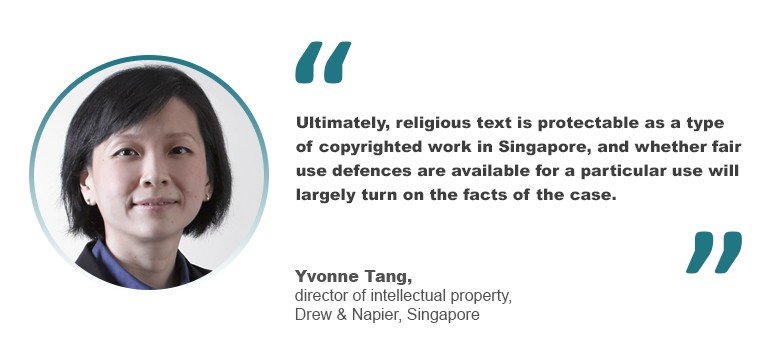
“Ultimately, religious text is protectable as a type of copyrighted work in Singapore, and whether fair use defences are available for a particular use will largely turn on the facts of the case,” said Tang. “This may be viewed as unremarkable, given that this position is likely similar in most other jurisdictions.”
She added that what is of interest, however, is that while the Copyright Act does not provide for different or special treatment for religious text as a category of works, there is a unique provision under the Copyright Act that expressly deals with one aspect of a religious nature, and that is the religious performance of literary, dramatic or musical works.
Section 296 of the Copyright Act provides that the performance of a literary, dramatic or musical work does not constitute copyright infringement if (a) the work is religious and (b) the performance is in the course of services at a place of worship or other religious assembly. “This provision can be traced back to Section 42 of the repealed Copyright Act 1987 and was brought about as a result of opposing views that were put forth during the copyright reform exercise in 1986 on the issue of whether religious organizations should be exempted from the copyright law that was about to be enacted then,” she said.
She added: “While there are no local cases that have dealt with the enforcement of copyright in religious text, it has been opined that the Singapore courts may consider wider policy considerations when assessing fair use (or ‘fair dealing’ under the repealed Copyright Act). In the context of religious practice, there is a strong policy objective in maintaining religious harmony. As such, in assessing a particular use of religious text in a copyright infringement dispute, a court may consider whether permitting the use in question is in line with this broad policy objective.”
Traditions v. legal requirements
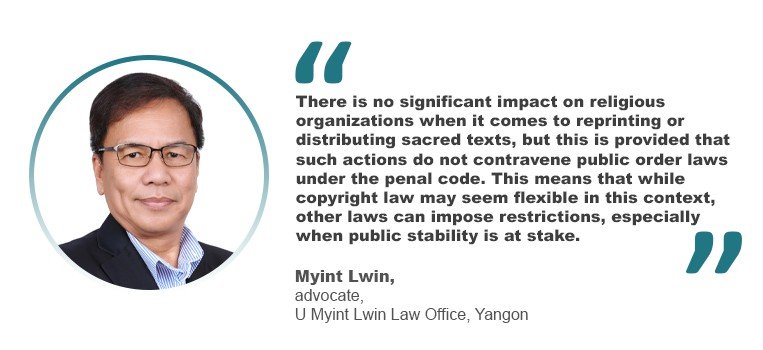
In Myanmar, the Myanmar Copyright Law 2019 is the key legal framework governing religious texts, according to Myint Lwin, an advocate at U Myint Lwin Law Office in Yangon. Although he said that “there was no significant impact on religious [organizations] when it comes to reprinting or distributing sacred texts,” he added that this is provided that such actions do not contravene public order laws under the penal code. This means that while copyright law may seem flexible in this context, other laws can impose restrictions, especially when public stability is at stake.
Sereyratha Chan, a senior legal associate at S&O IP in Phnom Penh, also noted that religious texts in Cambodia are generally considered part of the public domain and are not subject to copyright. This reflects a communal attitude towards these works, viewing them as collective heritage rather than individual intellectual property. “The act of reprinting or distributing sacred texts is in all intent for education,” explained Chan, and as such, copyright does not impede these activities.
She observed that the lack of resources and legal expertise presents a significant hurdle in navigating copyright laws. Religious organizations may struggle with understanding and complying with copyright regulations, particularly in a context where these texts are seen as communal property. This highlights a key issue for many religious communities: balancing tradition with legal requirements.
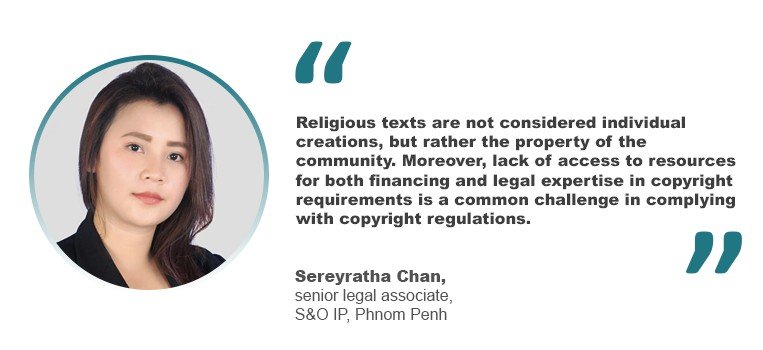
“Religious texts are not considered individual creations, but rather the property of the community,” said Chan. “Moreover, lack of access to resources for both financing and legal expertise in copyright requirements is a common challenge in complying with copyright regulations.”
She added: “In Cambodia, religious texts are seen as a part of the collective heritage and are frequently disseminated by means of fundraising. Given the communal attitude, we have not come across any cases involving the sharing and replication of religious texts.”
For religious organizations to balance the need to preserve their traditions with the legal requirements of copyright laws, Chan said that there are several methods to follow:
- Educate its members on copyright legislation and its exceptions to foster a better awareness of their rights and responsibilities as well as the usage norms of the community.
- Fair Use and Licensing: By registering copyrights with the appropriate ministry or government body, copyright holders can grant licenses for distribution while allowing non-economic gain that is necessary for educational purposes.
- The public can learn about religious texts and exercise some influence over their use thanks to unrestricted access.
Ultimately, the relationship between copyright laws and religious texts is complex and varies significantly across different jurisdictions. As these legal landscapes continue to evolve, religious communities will need to stay informed and adaptable to ensure that their sacred traditions remain protected and respected.





